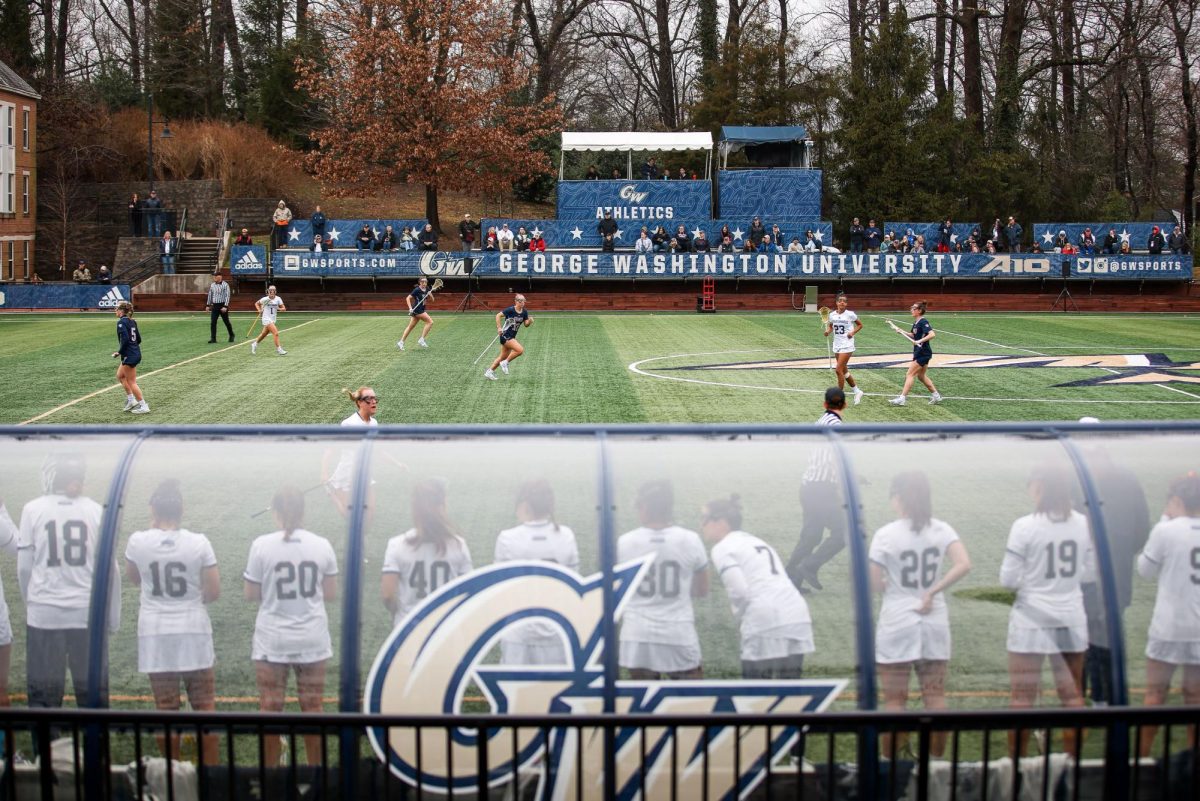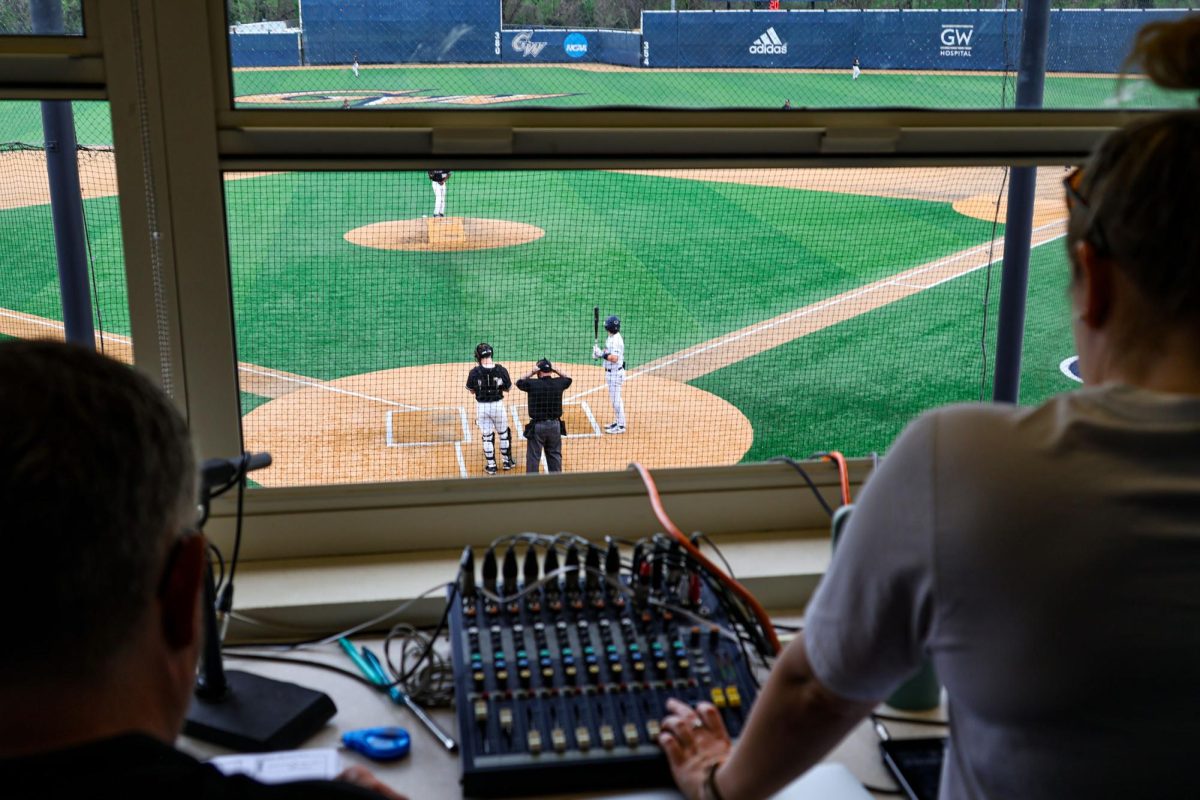The idea of attending college in America wasn’t freshman Francisco Dias’ priority.
The Lisbon, Portugal native wanted to become a professional tennis player – not a Colonial. But when he was offered a spot with the defending Atlantic 10 champions, it was one he couldn’t turn down.
“I did not think I was going to college in the beginning, because I wanted to go to the pro levels. When the opportunity came, I knew I couldn’t turn it down,” Dias said. “It was prestige, and it was such a new opportunity.”
GW’s offer got Dias thinking stateside. He reached out to friends and relatives living in the District, asking for their opinions about GW. Though he never once visited Foggy Bottom, Dias was impressed enough by what he read and heard to enroll.
Head coach Greg Munoz first saw Dias competing against a top-ranked American opponent in the Orange Bowl International Championships, one of the most prestigious international junior events in the U.S., and was impressed with his play. When Munoz noticed Dias’ impressive power, commanding serve and “perfect volleys,” he knew he wanted to bring that play to Foggy Bottom. So he sold Dias on GW, emphasizing the team’s academic and athletic successes.
“I explained it more, do you want to be part of a team that wants to be already established and its history speaks for itself, or do you want to be part of something new and make the history?” Munoz said.
It was a big decision for the first of five children introduced to tennis. Dias was given a racket at 4 years old by his grandfather, who fell in love with the sport at the age of 40. He wanted his grandson to earn the sport from an earlier age, so he enrolled Dias in tennis school.
Dias put more time and effort into honing his skills, continually striving to be a stronger competitor. When he was 14, Dias started to believe he had the potential to go professional, so he joined Clube Escola Tenis Oeiras, a more competitive team, one that matched him to international opponents. At a young age, Dias began to travel alone to competitions, a scenario that prepared him for life at GW – and one he says made his transition from Lisbon to Foggy Bottom easy.
“The transition is not really hard. I traveled a lot by myself when I was 14,” Dias said. “I’m so used to being alone and taking care of myself.”
Dias comes to GW with an impressive resume. He’s ranked the No. 8 tennis player in Portugal, and was recently ranked No. 945 by the Association of Tennis Professionals. He’s the only player in Portugal’s history to own four ATP rankings by the age of 17, and only the third Colonial in program history to earn an ATP ranking.
His ranking as the 10th rated newcomer in the nation by the Intercollegiate Tennis Association makes Dias one of the most highly-touted recruits to suit up for the Colonials. But his accolades don’t come with nerves or pressure, he said, just an increase in drive. And it’s a boon for Munoz, who calls Dias a recruit he can build a program around. Though the freshman is still adjusting to playing on hard courts rather than clay courts, Munoz calls him the “next generation recruit,” that will help shape the Colonials for years to come.
“The goal is to build around him, because he’s 900 in the world, well I want him to be in the top 600 by the time he graduates,” Munoz said. “The goal is to be able to attract others.”
Dias is currently making the tournament circuit with the Colonials for their fall season, recently making waves with GW at the ITA/D’Novo All-American Championships, where teammates junior Alexander van Gils and sophomore Ulrik Thomsen were picked as the first alternates in doubles play. His experience at GW has been positive so far, Dias said, mainly due to the bonds he’s forming with his teammates, who have embraced their new member.
Munoz is already seeing the signs of a leader in Dias. He fits in well with the team, transitioning easily onto Foggy Bottom. The rest of the team is already stepping up their play around him, Munoz said, pushing themselves to be better.
“With Francisco’s arrival, the entire team has stepped up to compete with him, not against him,” Munoz said. “They’ve raised their level to his, and he’s got a lot of eyes on him, but a lot of other guys are doing well. We’re headed to having two nationally ranked doubles teams as well as one or two nationally ranked singles player.”
Elizabeth Traynor contributed to this report.






